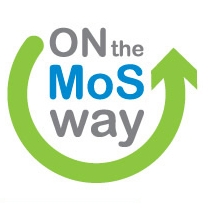The DocksTheFuture Project aims at defining the vision for the ports of the future in 2030, covering all specific issues that could define this concept.
The Consortium just completed an in-depth desktop study on the Port of The Future concept. The desktop study sets the framework for all other packages, as it is to define the concept of the port of the future. By definition a concept is “The reasoning behind an idea, strategy, or proposal with particular emphasis placed on the benefits brought on by that idea’, or an abstract or generic idea generalized from particular instances”. The other work packages will elaborate the concept into among others tools for evaluation and transferability of Port of the Future solutions.
A long list of over 340 inputs was established based upon the feedback of all project partners, and the subcontractors Lloyds’s register, TU Delft and Association des Villes Portuaires (AIVP). From this list, 297 have been processed and analysed as potentially relevant for DTF, whilst currently 43 have been fully assessed. All partners participated in the desk top study, PortExpertise was leading the Work Package and performed on this deliverable by means of its reviews of the assessments, enquiries on the database, and processing feedback from partners and external parties.
In order to arrive to a definition of port of the future, the authors had to operate within the project’s framework as defined in the grant agreement. A clear definition of a port was not supplied in the project proposal but to allow a focused desk top analysis, the following definition of a port was used: “An area on both land and water, whether on the sea or river, that provides facilities for shipping vessels to load and unload their cargo or to let passengers embark or disembark”. It is of course the intention at the end of WP1 to come to a clearer definition.
Although a total number of fourteen main topics were identified, two main topics are omnipresent and draft the shape of the port of the future by 2030: sustainability and digitization, digitalization and digital transformation in all its aspects. Especially the environmental dimension of the sustainability topic has very concrete measures and objectives often as results of international, national regulations, of which it is certain they will shape future ports characteristics. Ports that do not fully embrace the ‘growth with green’ concept, will find it increasingly difficult to get their activities approved by society. This aspect also reveals the rather hidden dimension of the port-city relations. Ports only recently discovered the importance of maintaining good relationships with society, and its connected city as such.
On the society point of view, ports are aware of keeping to a good, elaborated communication plan with the public. To this aspect increasing cooperation is made with city municipalities with regards to events, job creation, investing in social infrastructure (public transport, cycle paths, residential areas, green buffer zones …). Together with partner AIVP (Association Internationale des Villes Portuaries) a high number of ready-to-use inputs were identified and analysed on the way to improve port/city relations, including regenerations of port areas.
Digitization, digitalization and digital transformation are here to stay the next decades. After decades of investment focus on port infrastructure and the superstructure, the reality today is that bottlenecks are persistent and remain difficult to solve on a structural basis, even when the ‘physical’ barrier was already addressed. A previously less attended barrier came to the forefront, namely the lack of data- and information sharing along the supply chain. In many cases it remains the cause in explaining why certain forecasted targets remain unmet, such as modal split remaining far too low in some ports, with ‘king’ road still comfortably at a 60% or more share, despite various efforts on the infrastructure side.
A more mature stage of information sharing among the supply chain has many, already often repeated advantages, but its progress is slow, especially related to the public authorities lagging behind, non-existing standards and different procedures on the same logistics activities in and between member states. Interestingly in the Motorways of the Seas Detailed Implementation Plan, an inquiry among short sea operators revealed that easing customs procedures among others was on top of their agenda. The negative impact on the current classic supply chain jobs, is only addressed moderately and needs more concrete action plans to facilitate the change to the more analysis, monitoring and managing aspects of the logistics activities. Also in digitization insights grown. In various topics such as hinterland connections, maritime traffic, the E-reporting silo’s between transport modes, and economic sectors remain. The initial idea of one application (central network) covering all data, gradually become more realistically adjusted into connecting and federating the existing platforms between public, private economic actors in a federated architecture as was also proposed by the DTLF.
Alongside digitization, security aspects became apparent with real life examples affecting directly the shipping world (Maersk, Port of Rotterdam,). Ports co-operate also on this topic to share knowledge and insight into building up their defence mechanism.
A port of 2030, has a well advanced, accountable, sound sustainable attitude, and is well connected along its supply chain across its borders.
Click HERE for full pdf of this Deliverable.


